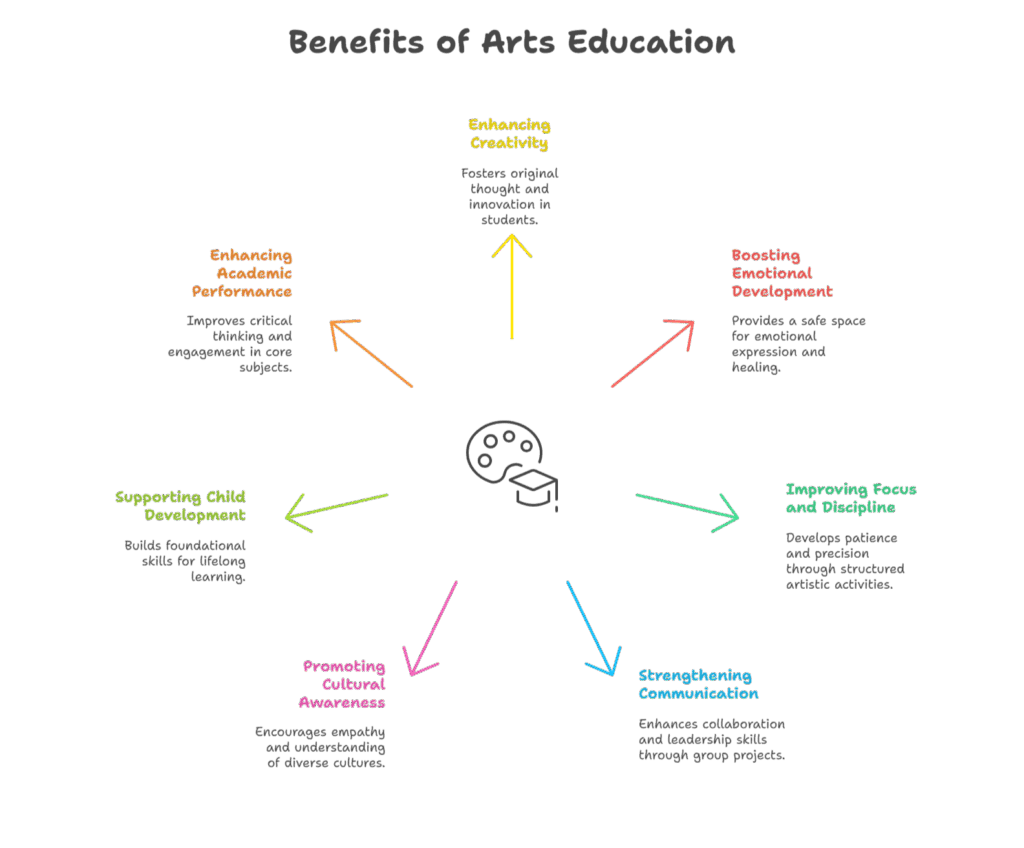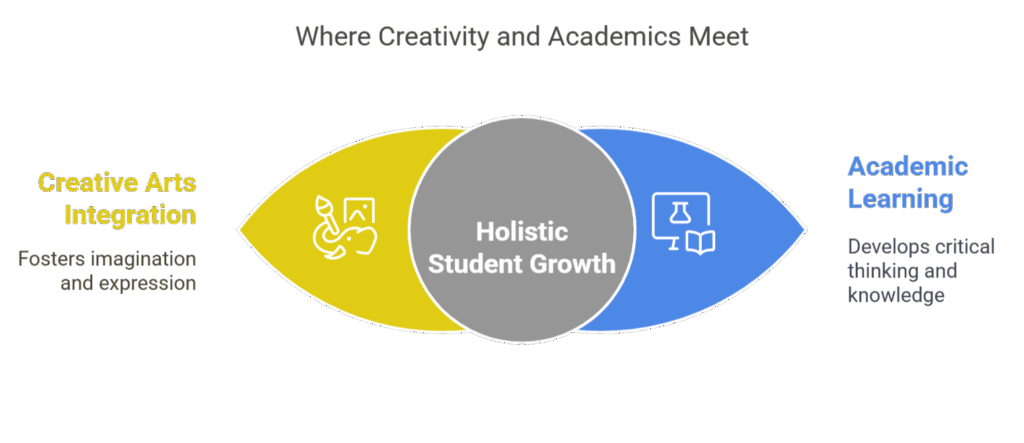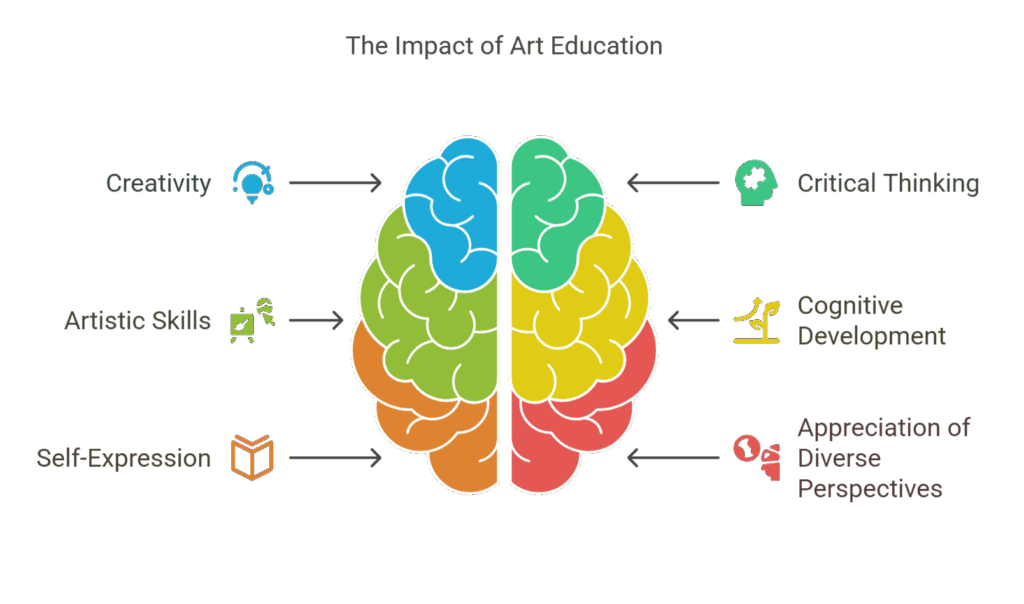Importance of Art Education in Schools
Art education is more than just a subject—it’s a lifeline for creativity, emotional expression, and holistic development. Still, in today’s results-driven academic environment, it’s often one of the first things to get cut.
But here’s the thing: the value of art education in schools isn’t just about learning to paint or draw. It’s about helping students grow into curious, confident, and well-rounded individuals.
In this blog, we’ll explore what art education is, why arts education is crucial, and how its presence supports everything from emotional well-being to academic success, especially in primary schools and early learning environments.
What Is Art Education?
When people hear “art education,” they often picture crayons and crafts. But it’s much broader than that. It includes music, dance, theater, and visual arts—disciplines that offer students the tools to express themselves, think critically, and connect with the world around them.
More importantly, art education isn’t an optional “extra.” It’s a vital part of a balanced curriculum that fosters creativity, empathy, and adaptability. These are skills that no test can measure—but every child needs to thrive.
Why Arts Education Is Crucial in Today’s Classrooms
Despite all the research on the benefits of art in schools, many institutions still treat it as optional. Academic performance and syllabus completion often take the front seat, while the arts are sidelined.
But the tide is turning. More schools now realize that to truly prepare students for the future, we need to nurture the whole child, not just their grades.

Let’s explore why the arts should be taught in schools and how they shape student development:
Enhancing Creativity and Imagination
Art teaches students how to think differently. Whether they’re writing a play, sketching a scene, or composing music, they’re engaging in original thought. Creativity through art education isn’t just about talent—it’s about practice, exploration, and making connections. And honestly? In a world that values innovation over repetition, imagination might just be the most essential 21st-century skill.
Boosting Emotional Development
Art can be healing. It helps students process feelings they might not yet have words for. Whether it’s through painting, journaling, or dance, emotional development through art creates a safe space for expression. This isn’t just helpful—it’s necessary, especially for kids dealing with stress, anxiety, or pressure to perform.
Improving Focus and Discipline
Yes, art is creative—but it’s also structured. Learning an instrument takes repetition. Mastering a painting technique takes patience. Dancing requires timing and precision. These experiences build focus, discipline, and perseverance—skills that carry over into academic work and beyond. Art improves focus and discipline in a way that’s both fun and challenging.
Strengthening Communication and Collaboration
Group projects like murals, plays, or musical performances teach more than artistic skills. They teach students how to listen, share ideas, compromise, and lead. It’s one of the best examples of how art supports learning that goes far beyond the classroom. Even introverted students often find their voice in these shared creative experiences.
Promoting Cultural Awareness and Inclusion
Art invites students into different worlds through music, dance, traditions, and stories. It helps them appreciate perspectives outside their own. That kind of exposure fosters empathy and inclusion, essential traits in a diverse, global society. Learning beyond academics helps prepare children for a more interconnected world.
Supporting Child Development from the Ground Up
The importance of art education in primary schools is immense. It helps develop fine motor skills, spatial reasoning, and emotional regulation—all foundational to a child’s growth. Early exposure to art sets the stage for a lifelong love of learning. Honestly, the earlier they start, the better. Choosing the right academic foundation, including schools supporting creative education, is key.
Enhancing Academic Performance
It may surprise some, but art influences academic success, too. Research shows that students involved in the arts often perform better in core subjects like math and reading. Why? Because they learn to think critically, pay attention to detail, and engage more deeply with learning. In short, art helps minds grow in all directions.
Why Vikas The Concept School Champions the Arts

At Vikas The Concept School, we believe learning should nourish both the mind and the imagination. Our curriculum doesn’t just accommodate the arts—it embraces them. From dance and music to theater and fine arts, we integrate creative learning from the earliest grades onward. We’ve seen firsthand how creativity helps students grow—not just academically, but personally and socially.
Final Thoughts: Let’s Keep Creativity in the Classroom
So, why is it important to learn about art? Art helps students understand themselves and the world around them. It’s about making meaning, building resilience, and seeing possibilities. Treating art as essential, not extracurricular, opens the door to deeper, richer education.
Curious about how we bring art education to life? Visit our website or get in touch to learn more about our programs, philosophy, and admissions.
Frequently Asked Questions
- What are the benefits of art education in schools?
Art education offers far more than a chance to paint or draw—it builds essential life skills. Students engaged in the arts often experience reduced stress, improved concentration, and stronger social abilities like teamwork and communication. They also learn to approach problems creatively, which is critical in today’s innovation-driven world. - Why is art education important for child development?
Art supports every aspect of growth—cognitive, social, and emotional. Young learners develop fine motor skills and spatial reasoning through drawing and sculpting, while music and drama foster empathy and cultural awareness by helping kids “step into someone else’s shoes.” - How does art education impact academic achievement?
Engaging in the arts can boost performance in core subjects. Students active in music, theater, or visual arts tend to score higher on tests in math and reading because art training sharpens critical thinking, attention to detail, and persistence—skills that transfer to all areas of learning. - At what age should art education start?
Early is best. Introducing structured art activities in pre-K and primary grades lays the groundwork for lifelong creative and analytical skills. Even simple process art—where children freely explore materials—supports emotional processing and fine motor development from age three or four. - What skills do students learn from art education?
Through art, students cultivate creativity, discipline, and collaboration. They build emotional literacy by expressing thoughts they can’t yet put into words, enhance spatial reasoning through activities like sculpture, and develop perseverance by mastering techniques in music or painting. - Why is art education necessary in primary schools?
Primary years are crucial for brain development. Art complements literacy and numeracy by reinforcing pattern recognition, storytelling, and sequencing. Early art experiences spark curiosity and confidence, making children more engaged learners overall. - How does art education support emotional well-being?
Art provides a safe, non-verbal outlet for feelings that kids might struggle to express—everything from joy to anxiety. Creative tasks like journal art or drama exercises can reduce stress and build resilience, serving as an essential emotional “release valve.”

